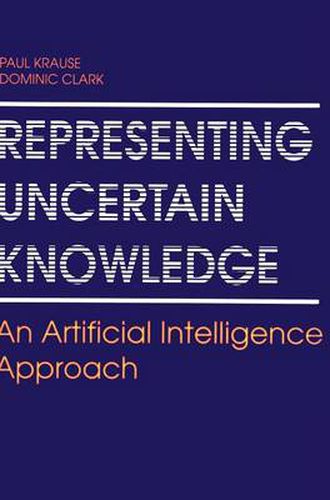Readings Newsletter
Become a Readings Member to make your shopping experience even easier.
Sign in or sign up for free!
You’re not far away from qualifying for FREE standard shipping within Australia
You’ve qualified for FREE standard shipping within Australia
The cart is loading…






This title is printed to order. This book may have been self-published. If so, we cannot guarantee the quality of the content. In the main most books will have gone through the editing process however some may not. We therefore suggest that you be aware of this before ordering this book. If in doubt check either the author or publisher’s details as we are unable to accept any returns unless they are faulty. Please contact us if you have any questions.
This text identifies the central role of managing uncertainty in AI and expert systems and provides a comprehensive introduction to different aspects of uncertainty and the rationales, descriptions (through worked examples), advantages and limitations of the major approaches that have been taken. The book introduces and describes the main ways in which uncertainty can occur and the importance of managing uncertainty for the production of intelligent behaviour in AI and its associated technologies of knowledge-based systems. It also describes the rationale, advantages and limitations of the major representational approaches (both quantitative and symbolic) that have been employed in AI systems and provides a worked illustration of each method. Finally, the book summarizes the significant themes that have emerged from applications and the research literature and identifies current and future directions. Concentrating wholly on this specific area of Artificial Intelligence, the work is aimed primarily at researchers and practitioners involved in the design and implementation of expert systems, other knowledge-based systems and cognitive science. It should also be of value to students of computer science, cognitive science, psychology and engineering with an interest in AI or decision support systems. While a technical book, technical details are presented in appendices, allowing the text to be read continuously by nontechnical readers.
$9.00 standard shipping within Australia
FREE standard shipping within Australia for orders over $100.00
Express & International shipping calculated at checkout
Stock availability can be subject to change without notice. We recommend calling the shop or contacting our online team to check availability of low stock items. Please see our Shopping Online page for more details.
This title is printed to order. This book may have been self-published. If so, we cannot guarantee the quality of the content. In the main most books will have gone through the editing process however some may not. We therefore suggest that you be aware of this before ordering this book. If in doubt check either the author or publisher’s details as we are unable to accept any returns unless they are faulty. Please contact us if you have any questions.
This text identifies the central role of managing uncertainty in AI and expert systems and provides a comprehensive introduction to different aspects of uncertainty and the rationales, descriptions (through worked examples), advantages and limitations of the major approaches that have been taken. The book introduces and describes the main ways in which uncertainty can occur and the importance of managing uncertainty for the production of intelligent behaviour in AI and its associated technologies of knowledge-based systems. It also describes the rationale, advantages and limitations of the major representational approaches (both quantitative and symbolic) that have been employed in AI systems and provides a worked illustration of each method. Finally, the book summarizes the significant themes that have emerged from applications and the research literature and identifies current and future directions. Concentrating wholly on this specific area of Artificial Intelligence, the work is aimed primarily at researchers and practitioners involved in the design and implementation of expert systems, other knowledge-based systems and cognitive science. It should also be of value to students of computer science, cognitive science, psychology and engineering with an interest in AI or decision support systems. While a technical book, technical details are presented in appendices, allowing the text to be read continuously by nontechnical readers.